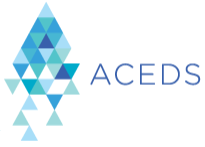We’re beginning to see more disputes between parties regarding the use of technology assisted review (TAR) in discovery. Usually in these disputes, one party wants to use TAR and the other party objects. In this case, the dispute was a bit different…
In Hyles v. New York City, No. 10 Civ. 3119 (AT)(AJP) (S.D.N.Y. Aug. 1, 2016), New York Magistrate Judge Andrew J. Peck, indicating that the key issue before the court in the discovery dispute between parties was whether (at the plaintiff’s request) the defendants can be forced to use technology assisted review, refused to force the defendant to do so, stating “The short answer is a decisive ‘NO.’”
Case Background
In this discrimination case by a former employee of the defendant, after several delays in discovery, the parties had several discovery disputes. They filed a joint letter with the court, seeking rulings as to the proper scope of ESI discovery (mostly issues as to custodians and date range) and search methodology – whether to use keywords (which the defendants wanted to do) or TAR (which the plaintiff wanted the defendant to do).
With regard to date range, the parties agreed to a start date for discovery of September 1, 2005 but disagreed on the end date. In the discovery conference held on July 27, 2016, Judge Peck ruled on a date in between what the plaintiff and defendants – April 30, 2010, without prejudice to the plaintiff seeking documents or ESI from a later period, if justified, on a more targeted inquiry basis. As to custodians, the City agreed to search the files of nine custodians, but not six additional custodians that the plaintiff requested. The Court ruled that discovery should be staged, by starting with the agreed upon nine custodians. After reviewing the production from the nine custodians, if the plaintiff could demonstrate that other custodians had relevant, unique and proportional ESI, the Court would consider targeted searches from those custodians.
After the parties had initial discussions about the City using keywords, the plaintiff’s counsel consulted an ediscovery vendor and proposed that the defendants should use TAR as a “more cost-effective and efficient method of obtaining ESI from Defendants.” The defendants declined, both because of cost and concerns that the parties, based on their history of scope negotiations, would not be able to collaborate to develop the seed set for a TAR process.
Judge’s Ruling
Judge Peck noted that “Hyles absolutely is correct that in general, TAR is cheaper, more efficient and superior to keyword searching” and referenced his “seminal” DaSilva Moore decision and also his 2015 Rio Tinto decision where he wrote that “the case law has developed to the point that it is now black letter law that where the producing party wants to utilize TAR for document review, courts will permit it.” Judge Peck also noted that “Hyles’ counsel is correct that parties should cooperate in discovery”, but stated that “[c]ooperation principles, however, do not give the requesting party, or the Court, the power to force cooperation or to force the responding party to use TAR.”
Judge Peck, while acknowledging that he is “a judicial advocate for the use of TAR in appropriate cases”, also noted that he is also “a firm believer in the Sedona Principles, particularly Principle 6, which clearly provides that:
Responding parties are best situated to evaluate the procedures, methodologies, and technologies appropriate for preserving and producing their own electronically stored information.”
Judge Peck went on to state: “Under Sedona Principle 6, the City as the responding party is best situated to decide how to search for and produce ESI responsive to Hyles’ document requests. Hyles’ counsel candidly admitted at the conference that they have no authority to support their request to force the City to use TAR. The City can use the search method of its choice. If Hyles later demonstrates deficiencies in the City’s production, the City may have to re-do its search. But that is not a basis for Court intervention at this stage of the case.” As a result, Judge Peck denied the plaintiff’s application to force the defendants to use TAR.
So, what do you think? Are you surprised by that ruling? Please share any comments you might have or if you’d like to know more about a particular topic.
Don’t forget that next Wednesday at 1:00pm ET, ACEDS will be conducting a webinar panel discussion, titled How Automation is Revolutionizing eDiscovery, sponsored by CloudNine. Our panel discussion will provide an overview of the eDiscovery automation technologies and we will really take a hard look at the technology and definition of TAR and the limitations associated with both. This time, Mary Mack, Executive Director of ACEDS will be moderating and I will be one of the panelists, along with Bill Dimm, CEO of Hot Neuron and Bill Speros, Evidence Consulting Attorney with Speros & Associates, LLC. Click on the link here to register.
Disclaimer: The views represented herein are exclusively the views of the author, and do not necessarily represent the views held by CloudNine. eDiscovery Daily is made available by CloudNine solely for educational purposes to provide general information about general eDiscovery principles and not to provide specific legal advice applicable to any particular circumstance. eDiscovery Daily should not be used as a substitute for competent legal advice from a lawyer you have retained and who has agreed to represent you.







